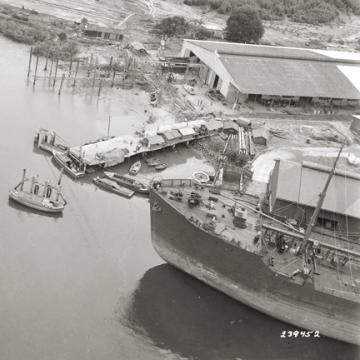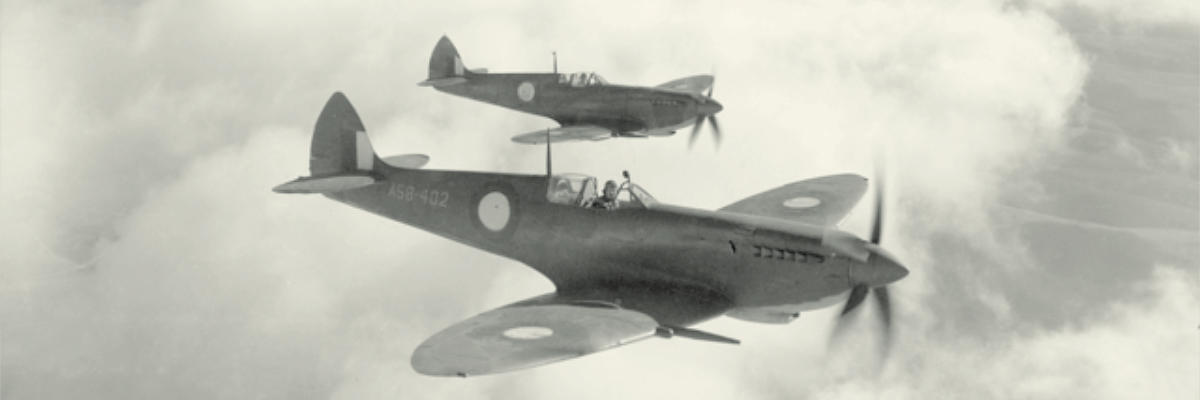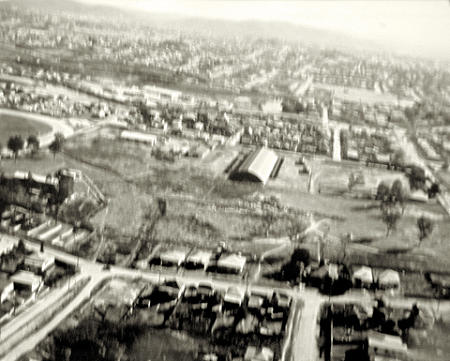Bring Home The Images Project … To Australia
Scenario 1

USAAF B-17 Liberator. Photo: AWM
YOU'RE interested in the World War Two (WW2) years IN AUSTRALIA. In particular, you've heard or read about some base or camp urgently built by (?) or for American forces in say, QUEENSLAND where most of their activity centred. HOW (WHERE?) do you find PHOTOS of it?
Being a US activity there's little chance that local (Australian) newspaper photographers would have gained admittance, perhaps not even Australian Department of Information (DOI) photographers were allowed access. So, try the internet at sites like State Library of Qld's Picture Australia, or my friend Peter Dunn's OZ at War site.
Scenario 2
YOU'RE assessing the heritage aspect of an old building or residence and local legend says it was 'occupied (secretly ?) by the Americans'. You're scarce on detail about it during WW2. You try NAA's (National Archives of Australia) on-line database and may be lucky with some detail of its being occupied under the 'National Security (Emergency) Regulations' of the day. But, PHOTOS ? – not likely.
Scenario 3
YOU'RE doing some 'PR' story for the 'local harbour board' and you'd like PHOTOS evidencing US troop or shipping movements, during WW2. You come away from your search less than fulfilled and somebody steers you to some museum here in Australia, the specialty of which is the 'World War Two occupation of Australia by the Americans'. You feel sure 'here will be some comprehensive key-word searchable database SHOWING you the huge wealth of somewhere between 10 and 20 thousand B&W still pictures taken by US Services' people HERE IN AUSTRALIA, DURING WW2'.





The 'Real World'
Well, dream on – it doesn't exist – not yet! The photos DO but they lie 'doggo' IN THE US Archives! Our last visit in 2004 left us understanding these photos may not be digitised 'any time soon'. Everything's card-file index driven and, effectively, you have to 'go there'. If for you, money is not the issue you can hire 'local' US researchers. They may find some – you pay them AND the fees for re-pro quality prints from some NARA approved vendor. You review the photo(s) and wonder IF there may still be other shots, perhaps from another angle. WHEN I WIN LOTTO or manage to attract financial sponsorship for my personal project to BHTI – "BRING HOME The(se) IMAGES" your dream may come true!
During my research for QAWW2, I became aware of this huge important photo resource. American friends kindly did some 'digging' and I was pleased with the few so obtained and featured in that work. I'd heard of the famed 'USAF pre-1954 photo collection' then on extended loan from NARA to the Smithsonian Institution's NASM. They were 'putting it on optical disc'. Such systems were then rapidly evolving, the pace of which literally overtook that organisation. The result was unsatisfying to the point where today it's not easy to VIEW such out-dated product
In my study of NARA's still pictures I'd become aware of around nine major holdings relevant to the Australian Mainland, WW2. The principal one I believe is RG111SC – 'SC' standing for the US Army's SIGNAL CORPS. It seemed likely to contain some 6500 relevant images, approx 1% of that entire holding. Because the US Air Force had its beginnings in the US Army's Air Corps it became obvious that 'AC' prefacing an aviation related photo meant Air Corps. When the NASM eventually did return the loaned material, NARA promptly redesignated it … RG342FH.
Striving as I was to understand such rationale, I asked; if SC was Signal Corp and AC was Air Corps what was FH? NARA answered saying, "believe it or not, we were so pleased to get it back we called it FH; Finally Here"!
My Project — Bring the Images Home to Australia

RAAF P-40 Kittyhawk. Photo: AWM
It must be said – I went looking for photos, 'aircraft and Airfields' related but I quickly realised it was broad MILITARY history I had found! Because personnel included were generally NAMED with home town etc, here was FAMILY history too.
We were able to 'copy' chosen prints by various methods, depending on our specific needs. 'Flattening' the bulky album for normal photo-copying was not only disallowed but impossible short of temporary disassembly. In our visits, NARA was very accommodating allowing researchers to 'rock in with laptop under one arm and flat-bed scanner under the other'. While such scanning is ideal from point of view of quality it is very time consuming.
Both conventional photo-copying and full scanning can only be done by calling up the 'duplicate print(s)'. During our 2001 visit the duplicates were stored in 'shoe boxes', tightly packed, several hundred to each box. It was indeed 'a pain' to search for individual (number) prints, remove for copying and return to correct order in the box! This system suffered from the inevitable inaccurate repositioning and physical dislodgement (often LOSS !) of the carbon-copy typed paper caption GLUED to rear face. On the other hand, duplicates generally still had their 'edge-marking' intact. I'll describe more fully later this edge-marking, such as I understand it. Suffice to say here that one element of such edge-marking is generally, 'Lat-Long' – i.e., WHERE the photo was taken. While it is sometimes wrong, it's usually better than nothing when the caption has been lost.
Clearly, time was always going to be our enemy. Early in our visits we settled on use of a hand-held digital camera for our copying of these images. The drawback is somewhat warped images with unwanted glints of light reflections. However, we really only needed a representative image for such 'finding aid database' and we need always to honour NARA's established system of public procurement of re-pro quality images.
To summarise, our progress after three such visits aggregating around 130 hours is approx 2400 images collected with surviving caption detail and as much edge-marking as we could find. Captions for American personnel are prolific with name, hometown, State and sometimes for Australians too.
Typical edge-marking on relevant Australia photos, features … "GHQ (General Head Quarters) – SWPA (South West Pacific Area) – SC (Signal Corps) – 43 (1943, date of photo by year) – 5276 (some sort of sequential print number), followed by '27S – 153E", in this case, the latitude – longitude for Brisbane, Queensland, Australia. It may be that late in the WW2 period of hostilities, the Signal Corps decided to discard some earlier cataloging system based on this '5276' print numbering in favour of the (current) 'SC #'. When one carefully notes the '5276' detail, one frequently finds OTHER photos in the original sequence evidenced by say, 5277 and 5278 (and same date!) but with ascribed SC #s way out of order.
For want of a proper database program, Jenny has inserted this assemblage of 100 pixel wide image and caption etc into a simple MS Word table format. We want to believe what the 'gurus' told us in that such info would be easily translated to an appropriate database program, 'when the time comes'.
The Australian War Memorial (AWM) was 'supportive' of this idea but National Archives of Australia (NAA) quickly shunted my enquiry re a possible 'Archive to Archive' program to LOCATE these and put them to a keyword searchable database (i.e. create an on-line finding aid!) to the 'too hard basket'. They suggested I approach the National Library of Australia (NLA) in respect of their program then titled 'Picture Australia' (PA). As of around 2004, the only foreign country participating in 'Picture Australia' was New Zealand. It was suggested I should encourage NARA's cooperation! AWM and NLA indicated they'd 'add a link' to their websites once such a 'finding aid' was compiled but until then, I'm on my own.
My written approaches to the Australian Government indicated they were not interested.
This matter should be viewed with some urgency because Archives periodically review holdings and discard downgraded bits. WW2 period Australia is truly a small 'bit' in NARA's ocean.





So, how have we sought to promote awareness of this valuable military AND Family history PHOTO resource?
We chose the publication of modest A5 size PHOTO Booklets, part colour, part B&W, initially BRISBANE - WW2 v Now ... from an American Archives' photo viewpoint some 24 in that series. We were living in Brisbane and a large portion of the images we'd found related to Brisbane and surrounds. For that series we drew on some RG 80 (Navy) RG 342FH (Air Corps) and a few from RG 373 Aerial Photography but it was mainly RG 111SC the Signal Corps Collection 'showing us the way.'
First of the BRISBANE series was Newstead House, which fortuitously became a collaboration with Peter Dunn now OAM, who was approached by the late David Gibson, then Director of Newstead House, preparing for the commemorative VP60 celebration in August 2005. The other 23 BRISBANE - WW2 v Now ... from an American Archives' photo viewpoint booklets were launched in 2006, by then US Consul-general in Australia, Mr Stephen Smith, at MMB - MacArthur Museum, Brisbane.
It was mostly all Signal Corps images we used for CAIRNS etc in 2012 and about then I was involved contributing to the Queensland Government's website WW2 Historic Places https://www.ww2places.qld.gov.au/. Informal discussion on steps to advance BHTI led to our obtaining scans, allegedly of all Australia related Index Cards (IC) for the Signal Corps Collection some 3750 odd. Transcribing these kept us busy for years, with BHTI ranking lower priority to family matters. Result of that tedious work is we now have a list of 2660 SC#s 'yet to obtain' to complete the Australia related component of RG111SC – principally the WW2 Signal Corps Collection. We have obtained a broad estimate to purchase these as above $20,000 AUD.
So it was while 'Rocky' was started in 2012, not till 5 October 2023 did ROCKHAMPTON - WW2 v Now ... From an American Archives' Photo Viewpoint get ZOOM launched in that city library's Fitzroy Room. All these booklets have a common story thread. It has been to plug my BHTI goal.
By then we'd asked AWM, NLA and SLQ for guidance towards a usable database. State Library of Queensland (SLQ) did suggest various Digital Asset Management Systems but it was to their indicated fall back of Excel we have progressed with.
To summarise, demonstrated during ZOOM launch of ROCKHAMPTON etc was our then 2400 odd NARA RG 111SC 'Australia related' Excel index file (including thumbs, caption and date) with individual links to close stored 'full images'.
While the Rocky launch may well be our last such A5 photo booklet it did prompt attention to BHTI. We were offered a USB containing several hundred image & caption scans from two like minded researchers. This has taken quite some time to review and transcribe into our MS Word tables. Further work of effective ADDITION to our NARA Index Excel file etc. Net result of this infusion is:
- ca 380 SC#s we did not have
- our list of 2660 SC#s yet to 'obtain' has been reduced to ca 2384 and,
- ca 100 on this USB were not only ones we didn't have but they were NOT in our list of 2660 SC#s yet to 'obtain'!
- That means this 380 image gain might reduce cost to purchase the known outstanding SC#s by ca $3000.
A note on NARA's path to digitisation
In the 1990s NARA loaned 'that Air Corps collection' to The Smithsonian's NASM on a journey towards 'digitisation'. That had its fumbles but two things did happen, though years apart.
- NARA's insistent call for return of loan saw the photos readmitted as RG342FH ... 'finally here' and,
- Around 2007 the images were accessible on Fold 3, website, though searching seemed limited.
NARA's growing website www.nara.gov has since incorporated that 'start' and now embraces RG111SC though searching 'Photographs of American Military Activities' https://catalog.archives.gov/search-within/530707?q=australia for.
'Australia' presently to reveal just 21 images*, only 13 of which apply to BHTI. Presumably in time all RG111SC's BHTI component will be fully searchable.
*a search of our Excel index file shows 2698 so it appears to me few BHTI images are presently accessible/viewable on https://catalog.archives.gov/search-within/530707?q=australia.
Meanwhile, publication of "BRISBANE - WW2 v Now ... from an American Archives' photo viewpoint" (2005-6) and "CAIRNS - WW2 v Now ... from an American Archives' photo viewpoint" (2012) all carried a common story thread - promoting awareness of this valuable photo resource lying 'doggo' in USA. Likely my last of these A5 size part colour photo-booklets "ROCKHAMPTON - WW2 v Now" etc was launched in Rockhampton City Library's Fitzroy Room to a local and ZOOM audience, 5 October 2023.
While a full functioning internet accessible mounting of BHTI is my goal, my current progress is an 'Excel version', i.e., an Excel NARA RG111SC (BHTI limited) file, with thumbs, link-opening 'close stored' full size images, albeit suffering distortions etc from their harvesting via hand-held digicamera. The Australia component of RG111SC we believe is around 5000, 2400 of which were included when this was demonstrated during our Oct 2023 launch. The SC#s of the missing images are derived from our tedious transcription of some 3,700 odd scans of allegedly ALL the Australia related card-files which 'came our way' via an anonymous donor. That Rocky launch prompted another donation of 380 image/caption duos from like-minded Australian researchers.
The Rocky scene is somewhat unique in that while I have most of the relevant SC images, there are some hundred odd in an Australian Archive holding – NAA's BP198/1* most of which are NOT mirrored in current SC collection. That they got there is evidenced by several pasted up 400 x 700 stiff cardboard sheets with clearly SC B&W 4'' x 5” Photos and explanatory captions typed/pasted below. Over time some have separated from their corner cleats. A separate envelope contains these dislodged photos. The drawings/plans are digitised and those loose photos scanned without captions. Australian Archives have applied a bottom edge mark – NAA BP198/1.
I had visited Cannon Hill years ago and digicamera photo'd all such boards. I emphasize the images ARE typical Sig Corps as they have the edge marking – what these in NAA generally DON'T sport is the SC # ascribed when they were taken from Army into NARA custody. So some of these seem never to have made it to SC numbering – i.e., they were culled. SC image captions in this period seem to have included name and address/ hometown/state of generally ALL US service people in the frame. Sometimes Australians included were named.
I assume the Australian authorities responsible for the multitude of hirings / leases of private property either required or were given the 70 odd drawings/maps and these photo boards as record of their US Army training activities round Rockhampton. From a family history point of view, a few of these 'culled' images show and NAME Australian civilians involved in 'support work for the Americans'. These deserve to be added with clear indication of their NAA location. This I intend to do.
My REQUEST & My CHALLENGE
On that note, I have both a REQUEST AND a CHALLENGE for YOU, my website visitor.
Firstly, my REQUEST – check my near full list of RG111SC #s in BHTI. This includes 'ALL those we do have (Black)' AND in RED, those we believe we've yet to gather to complete that Australia component of BHTI.
If you have any SC#s with captions please search that download with YOUR #s – any you have NOT in my 5094, please let me know; for example if your's is one or more of my REDS or maybe not even in my list, please let me know.
* Warning – There are 131 sheets in this "near full list of RG111SC #s in BHTI". Look through them if you wish but it'll be best to simply SEARCH with YOUR SC#s.
Now My Challenge – NARA's 'Photographs of American Military Activities'.
https://catalog.archives.gov/search-within/530707?q=australia seems fashioned to embrace all of RG111 SC. If it does ALL (other download) my selection of around 5 from each of the 'tenth points' throughout my 5094 list should be findable there – please check there and/or anywhere in www.nara.gov for these SC#s and some names/places so listed and let me know your results.

Spitfire Fighters, Formation Exercise. Photo: AWM
Name & Place Index
FROM THESE NARA RECORDS WE HAVE COMPILED a US and Australian NAME / PLACE INDEX. Perhaps YOU had a relative involved during WW2.
Similarly you may wish to search our list of US Services' photographers whose names appear in these captions.
Photo Booklets

View of Crosby Park warehouse site of 61st Chemical Warfare Co., Brisbane, Queensland, Australia. 1943. Photo: Cpl Claude Carney.
By end of 2004 we had made three privately funded trips to NARA (Washington DC, USA) on this pilgrimage, and we, Jenny and I have since produced a series of photo-booklets:
More Information:
- Database Name Search
- Back to Projects Index
- U.S. National Archives and Records Administration (NARA)
- NARA Military Photographs
- Australia @ War
- MacArthur Museum Brisbane
- Australian War Memorial Photos
- National Library of Australia's Trove Images
- State Library of Queensland Images
- Queensland WWII Historic Places